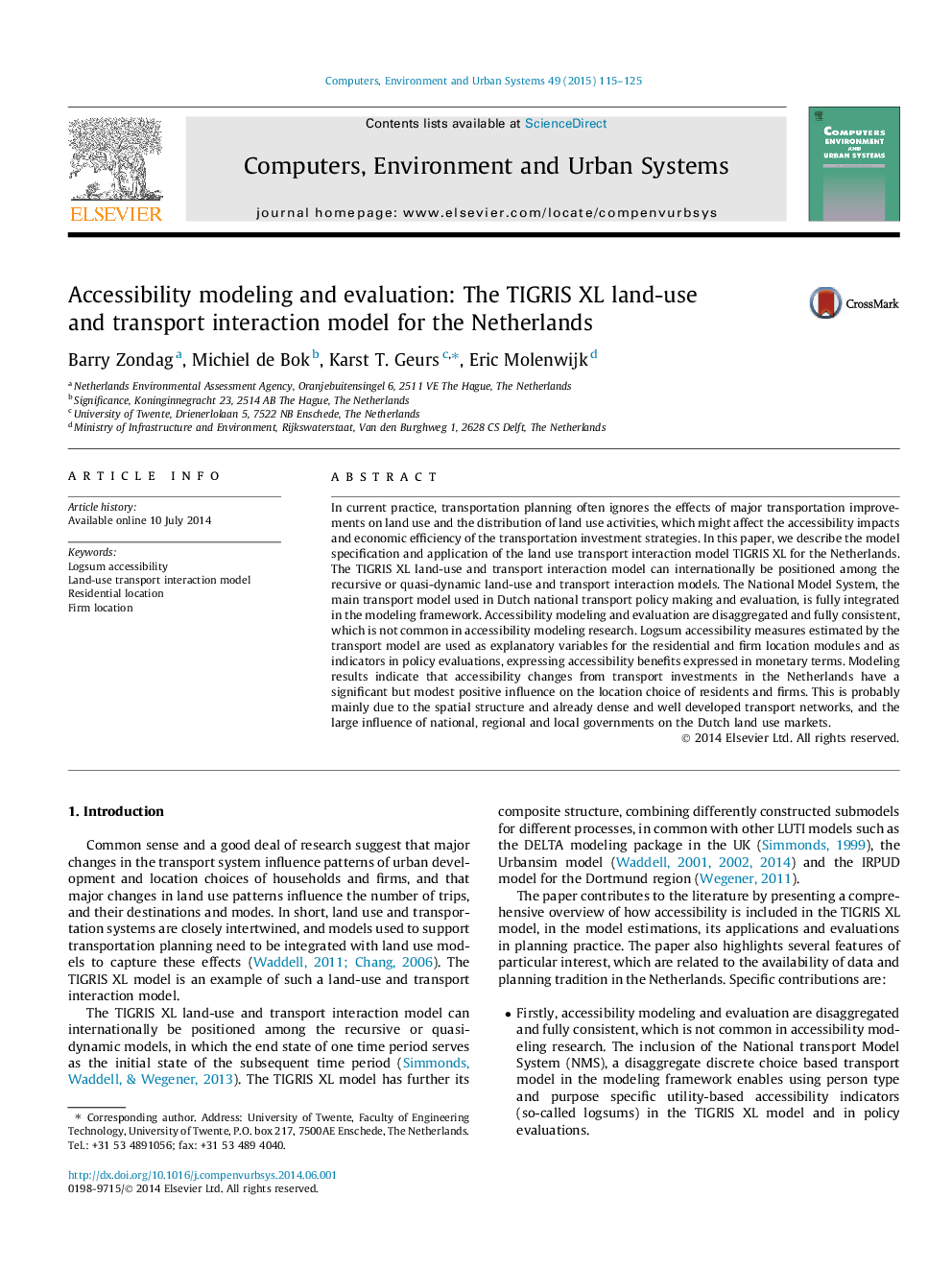| Article ID | Journal | Published Year | Pages | File Type |
|---|---|---|---|---|
| 506304 | Computers, Environment and Urban Systems | 2015 | 11 Pages |
•A disaggregated land-use transport interaction framework is developed for the Netherlands.•Accessibility changes have a significant but positive influence on the location choice of residents and firms.•Magnitude of land use effects from transport depend on time horizon and level of regulation of residential land market.
In current practice, transportation planning often ignores the effects of major transportation improvements on land use and the distribution of land use activities, which might affect the accessibility impacts and economic efficiency of the transportation investment strategies. In this paper, we describe the model specification and application of the land use transport interaction model TIGRIS XL for the Netherlands. The TIGRIS XL land-use and transport interaction model can internationally be positioned among the recursive or quasi-dynamic land-use and transport interaction models. The National Model System, the main transport model used in Dutch national transport policy making and evaluation, is fully integrated in the modeling framework. Accessibility modeling and evaluation are disaggregated and fully consistent, which is not common in accessibility modeling research. Logsum accessibility measures estimated by the transport model are used as explanatory variables for the residential and firm location modules and as indicators in policy evaluations, expressing accessibility benefits expressed in monetary terms. Modeling results indicate that accessibility changes from transport investments in the Netherlands have a significant but modest positive influence on the location choice of residents and firms. This is probably mainly due to the spatial structure and already dense and well developed transport networks, and the large influence of national, regional and local governments on the Dutch land use markets.
